
Julian Alden Weir was an American impressionist painter and member of the Cos Cob Art Colony near Greenwich, Connecticut. Weir was also one of the founding members of "The Ten", a loosely allied group of American artists dissatisfied with professional art organizations, who banded together in 1898 to exhibit their works as a stylistically unified group.

The Salon, or rarely Paris Salon, beginning in 1667 was the official art exhibition of the Académie des Beaux-Arts in Paris. Between 1748 and 1890 it was arguably the greatest annual or biennial art event in the Western world. At the 1761 Salon, thirty-three painters, nine sculptors, and eleven engravers contributed. From 1881 onward, it was managed by the Société des Artistes Français.

Richard Watson Gilder was an American poet and editor.

The Ten American Painters was an artists' group formed in 1898 to exhibit their work as a unified group. John Henry Twachtman, J. Alden Weir, and Childe Hassam were the driving forces behind the organization. Dissatisfied with the conservatism of the American art establishment, the three artists recruited seven others from Boston, New York City, and elsewhere on the East Coast, with the intention of creating an exhibition society that valued their view of originality, imagination, and exhibition quality. The Ten achieved popular and critical success, and lasted two decades before dissolving.
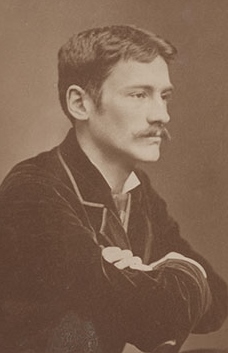
Thomas Wilmer Dewing was an American painter working at the turn of the 20th century. Schooled in Paris, Dewing was noted for his figure paintings of aristocratic women. He was a founding member of the Ten American Painters and taught at the Art Students League of New York. The Freer Gallery of Art at the Smithsonian Institution has a collection of his works. He was the husband of fellow artist Maria Oakey Dewing.

Frank Weston Benson, frequently referred to as Frank W. Benson, was an American artist from Salem, Massachusetts known for his Realistic portraits, American Impressionist paintings, watercolors and etchings. He began his career painting portraits of distinguished families and murals for the Library of Congress. Some of his best known paintings depict his daughters outdoors at Benson's summer home, Wooster Farm, on the island of North Haven, Maine. He also produced numerous oil, wash and watercolor paintings and etchings of wildfowl and landscapes.
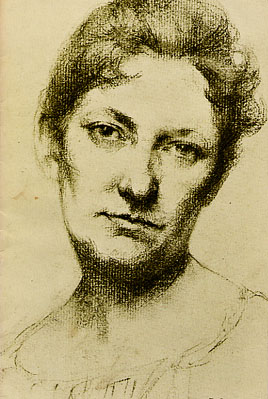
Minerva Josephine Chapman (1858–1947) was an American painter. She was known for her work in miniature portraiture, landscape, and still life.
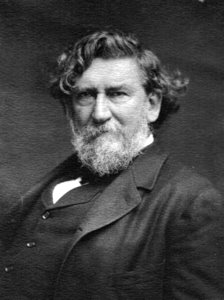
Thomas Satterwhite Noble was an American painter as well as the first head of the McMicken School of Design in Cincinnati, Ohio.

Otto Stark was an American Impressionist painter muralist, commercial artist, printmaker, and illustrator from Indianapolis, Indiana, who is best known as one of the five Hoosier Group artists. Stark's work clearly showed the influence of Impressionism, and he often featured children in his work. To provide a sufficient income for his family, Stark worked full time as supervisor of art at Emmerich Manual High School in Indianapolis from 1899 to his retirement in 1919, and as part-time art instructor on the faculty of the John Herron Art Institute from 1905 to 1919. Stark frequently exhibited his paintings at international, national, regional, and local exhibitions, including the Paris Salon of 1886 and 1887; the Five Hoosier Painters exhibition (1894) in Chicago, Illinois; the Trans-Mississippi Exposition (1898) in Omaha, Nebraska; the Louisiana Purchase Exposition (1904) in Saint Louis, Missouri; and international expositions (1910) in Buenos Aires, Argentina, and Santiago, Chile. He also supervised the Indiana exhibition at the Panama-Pacific International Exhibition (1915) in San Francisco, California. Stark remained an active artist and member of the Indianapolis arts community until his death in 1926.
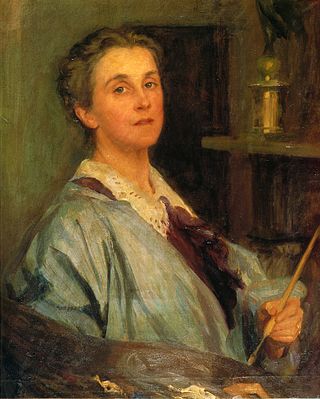
Lydia Field Emmet was an American artist best known for her work as a portraitist. She studied with, among others, prominent artists such as William Merritt Chase, Harry Siddons Mowbray, Kenyon Cox and Tony Robert-Fleury. Emmet exhibited widely during her career, and her paintings can now be found hanging in the White House, and many prestigious art galleries, including the Metropolitan Museum of Art.

The American Watercolor Society, founded in 1866, is a nonprofit membership organization devoted to the advancement of watercolor painting in the United States.
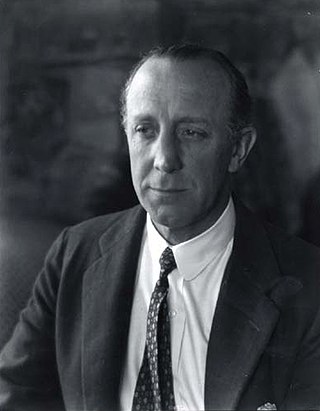
Paul Hampden Dougherty was an American marine painter. Dougherty was recognized for his American Impressionism paintings of the coasts of Maine and Cornwall in the years after the turn of the 20th century. His work has been described as bold and masculine, and he was best known for his many paintings of breakers crashing against rocky coasts and mountain landscapes. Dougherty also painted still lifes, created prints and sculpted.

Jennie Augusta Brownscombe was an American painter, designer, etcher, commercial artist, and illustrator. Brownscombe studied art for years in the United States and in Paris. She was a founding member, student and teacher at the Art Students League of New York. She made genre paintings, including revolutionary and colonial American history, most notably The First Thanksgiving held at Pilgrim Hall in Plymouth, Massachusetts. She sold the reproduction rights to more than 100 paintings, and images of her work have appeared on prints, calendars and greeting cards. Her works are in many public collections and museums. In 1899 she was described by New York World as "one of America's best artists."

Maria Oakey Dewing was an American painter known for her depiction of flowers. Her work was inspired by John La Farge and her love of gardening. She also made figure drawings and was a founding member of the Art Students League of New York. Dewing won bronze medals for two of her works at world expositions. She was married to the artist Thomas Dewing.
The National Association of Women Artists, Inc. (NAWA) is a United States organization, founded in 1889 to gain recognition for professional women fine artists in an era when that field was strongly male-oriented. It sponsors exhibitions, awards and prizes, and organizes lectures and special events.

The Grafton Galleries, often referred to as the Grafton Gallery, was an art gallery in Mayfair, London. The French art dealer Paul Durand-Ruel showed the first major exhibition in Britain of Impressionist paintings there in 1905. Roger Fry's two famous exhibitions of Post-Impressionist works in 1910 and 1912 were both held at the gallery.

Elizabeth Okie Paxton (1878–1972) was an American painter, married to another artist William McGregor Paxton (1869–1941). The Paxtons were part of the Boston School, a prominent group of artists known for works of beautiful interiors, landscapes, and portraits of their wealthy patrons. Her paintings were widely exhibited and sold well.
Louise Josephine Pope was an American painter. She studied at the New York School of Art, and then went abroad to study in Paris, Amsterdam and Madrid with Robert Henri. She exhibited work in the Salon d'Automne in Paris in 1912. In the United States, she exhibited at the National Academy of Design, the 1910 Exhibition of Independent Artists, the 1913 New York Armory Show, and the 1915 Exhibition of Painting and Sculpture by Women Artists for the Benefit of the Woman Suffrage Campaign, among others, contributing to the introduction of European Modernism to the United States.

Mary Evelyn Wrinch (1877–1969), was a Canadian artist who created miniature paintings, oil paintings, and block prints, sometimes inspired by the Northern Ontario landscape. She pioneered the 'Canadian style', painting landscapes with bold colours of the Algoma, Muskoka and Lake Superior regions, in situ. In her miniature paintings on ivory, she depicted her sitters with freshness and vitality. Her colour block prints are virtuoso examples of the medium.

Sarah Helena de Kay Gilder was an American painter, illustrator, and cultural tastemaker from New York City.


















